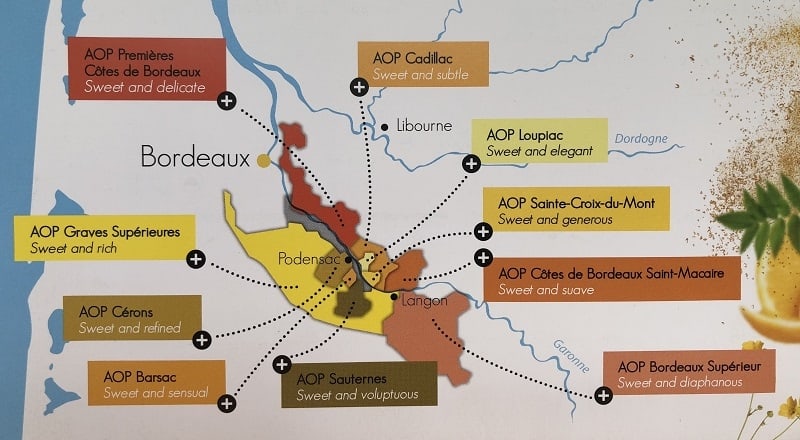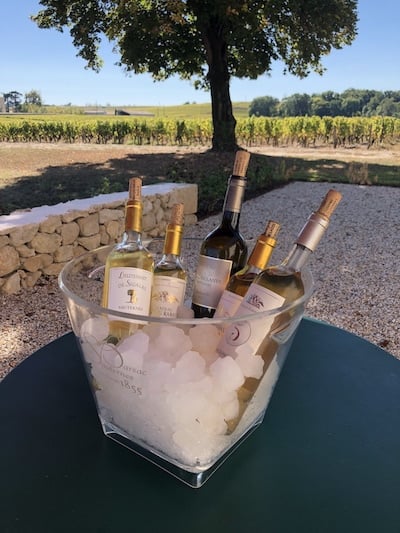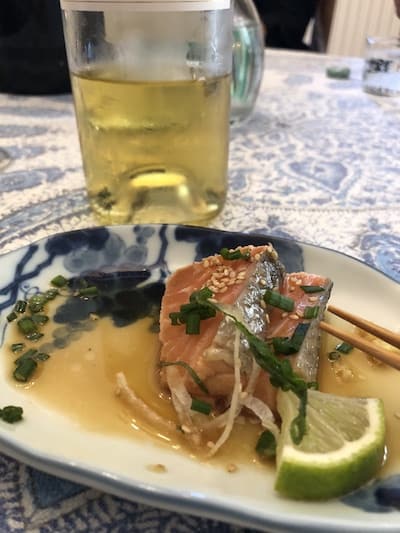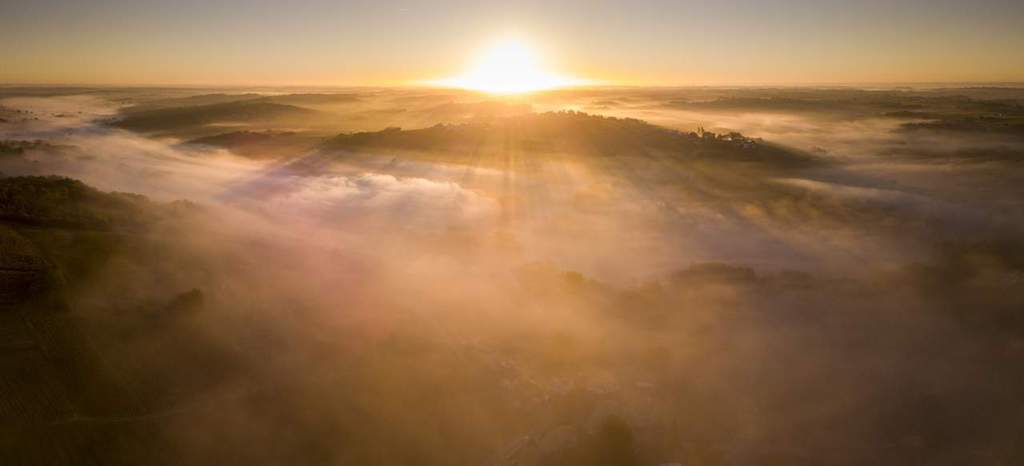A visit to Southern Bordeaux offers an experience unlike anywhere else in the world. It’s here that some of the most iconic unfortified sweet wines are produced, across 10 uniquely stunning terroirs.
In addition to the production of these wines — known for the integration of botrytis cinerea (noble rot) during viticulture and vinification — this region of Bordeaux offers the Winetraveler the ideal destination to immerse yourself in the wine culture of France.
Heading South…
Southern Bordeaux’s appellations — more commonly referred to collectively as “Sweet Bordeaux” — play host to over 500 wine-producing properties, 27 of which are designated Classified Growths of 1855. Roughly 3000 hectares of grapevines are planted on both sides of the Garonne River, yielding 70,000 hectolitres of wine annually. That’s only 2% of total wine production across the entirety of Bordeaux.
The 10 appellations we discuss below are all quality controlled “AOP”‘s (Appellation d’Origine Protégée, formally known as AOC or Appellation d’origine contrôlée).
RELATED: 30 Of The Best Wineries and Vineyards You Need To Experience in Bordeaux

In these areas it’s all about nuance, and the production practices here are some of the most intriguing and regulated in the wine world. Grapes are hand-harvested over multiple pickings while they reach optimal ripeness and/or botrytis integration. Everything from pruning methods, the distance between rows, vines, mildew control and disease prevention must be balanced in the vineyard.
RELATED: An Overview of Sweet Bordeaux White Wines
Visit These Incredible Chateau in Sweet Bordeaux

Sweet Bordeaux’s 10 Appellations
Sauternes
The most famous of Sweet Bordeaux’s appellations, Sauternes hosts some of Bordeaux’s most recognized properties, including Chateau d’Yquem and Chateau de Fargues. Location wise, this region resides on the Left Bank of the Garonne and is one of the most-southerly, though it is part of the Graves district.
While most assume that Sauternes is a single village, it actually encompasses the smaller villages of Barsac, Preignac, Fargues and Bommes. Sauternes wines are known for their full-bodied, opulent ripe flavors and their ability to maintain these nuances over long periods of aging.
Facts About Sauternes:
- 130 Producers
- Semillon, Sauvignon Blanc, Gris & Muscadelle
- Mix of Gravel, Clay, Silica, Chalky Clay and Limestone Soil
- Villages: Barsac, Preignac, Fargues, Bommes

Barsac
Barsac is the second-most well-known village in this region of Bordeaux. It’s positioned just Northwest of Sauternes, but Barsac is also considered its own AOP. These wines tend to be lighter ins tyle when compared to Sauternes, though they are still sweet and can also benefit greatly from aging.
Facts About Barsac:
- 35 Producers
- Semillon, Sauvignon Blanc, Gris & Muscadelle
- Limestone Sub-soil with surface Red Clay
- Village: Barsac

Loupiac
Meaning “Wolf” in French, Loupiac lies directly across from Barsac on the Right Bank of the Garonne River. These wines are also sweet but have an elegant and delicate style associated with them. Depending on the vintage and the onset of noble rot, concentrations of Sauvignon Blanc and Semillon can vary. This region is also experimenting with and promoting some of their more youthful sweet whites, which pair exceptionally well with seafood, shellfish and even sushi.
Facts About Loupiac:
- 37 Producers
- Semillon, Sauvignon Blanc
- Limestone Clay & Gravel Clay
- Village: Loupiac

Sainte-Croix-du-Mont
Positioned just South of Loupiac and also on the Right Bank of the Garonne, Saint-Croix-du-Mont contains one of the most unique geological sites in all of Bordeaux, with a massive 22 million-year-old fossilized oyster bed residing just beneath your feet. The region also offers some incredible views of the surrounding countryside extending for miles. Wines made here tend to be sweet, vibrant, full-bodied, fruity and versatile. They can be consumed immediately or aged for long periods.
Facts About Saint-Croix-du-Mont:
- 42 Producers
- Semillon, Sauvignon Blanc, Gris & Muscadelle
- Limestone
- Village: Saint-Croix-du-Mont

Cadillac
Cadillac is also located on the Right Bank of the Garonne River, surrounding both Loupiac and Saint-Croix-du-Mont. Semillon is the dominant grape variety planted in the area, with producers leveraging smaller concentrations of Sauvignon Blanc and Gris to give the wines additional vibrancy. Muscadelle aids in providing more layers of complexity.
Facts About Cadillac:
- 52 Producers
- Semillon, Sauvignon Blanc, Gris & Muscadelle
- Limestone, Clay and Gravel
- Villages: 22
Premieres Cotes de Bordeaux
Cotes de Bordeaux occupies a large swath of land on the Right Bank of the Garonne in the Northern portion of Southern Bordeaux. It’s best known for red wine production, with wines being dominant in Merlot or Cabernet Franc. “Premieres” Cotes de Bordeaux helps to distinguish the region from its red wines. You can expect to find Medium Sweet and Sweet white wines that are best consumed while they’re young and vibrant. White floral tones and yellow fruit characteristics are commonly present.
Facts About Premieres Cotes de Bordeaux:
- 43 Producers
- Sauvignon Blanc, Semillon
- Limestone, Clay and Gravel
- Villages: 39

Graves Superieures
Across the river from Premieres Cotes de Bordeaux on the Left Bank lies Graves Superieures. Graves encompasses virtually all of the smaller appellations of Sweet Bordeaux on this side of the Garonne, with the exception of Bordeaux Superieur. Wines produced in this larger AOP can range from Medium Sweet to Sweet, and they typically exhibit more toasted, honey and dried fruit notes. They pair well with heavier dishes and are less frequently consumed while young.
Facts About Graves Superieures:
- 57 Producers
- Semillon, Sauvignon Blanc, Gris & Muscadelle
- Gravel, Clay, Sand, Limestone
- Villages: 27
Cotes de Bordeaux Saint-Macaire
Immediately South of Saint-Croix-du-Mont on the Right Bank you can find Cotes de Bordeaux Saint-Macaire. A lesser-known appellation, the wines crafted here tend to be full-bodied with supple honeyed and candied aromatics.
Facts About Cotes de Bordeaux Saint-Macaire:
- 14 Producers
- Semillon, Sauvignon Blanc
- Sand, Clay, Chalk, Limestone
- Villages: 10

Bordeaux Superieur
Another large AOP covering all of the Southern portions of the Gironde, Bordeaux Superieur wines are less quality controlled from many of the appellations discussed above. These wines are commonly Medium-Sweet, and can be either machine or hand-harvested depending on the producer. Expect fresher, lighter-bodied wines here that are best consumed early on.
Facts About Bordeaux Superieur:
- 36 Producers
- Semillon, Sauvignon Blanc, Gris & Muscadelle
- Limestone, Clay & Gravel

Cerons
Last on our list of AOPs is Cerons. A region that focuses almost solely on Semillon-based sweet white wine production. Wines from Cerons tend to exhibit complexity and refinement along with a full and fruity body. Dominant tasting notes and aromatics can range from candied and roasted nuts to citrus and tropical fruit. Due to the lack of acidity often acquired from the use of Sauvignon Blanc, their aging potential is somewhat limited (not to be aged beyond 2-5 years).
Facts About Cerons:
- 14 Producers
- Semillon
- Gravel, Rough Sand, Chalk
- Villages: Cerons, Illats-et-Podensac
More Essential Reading On Bordeaux:
Uncorking The Sweet White Wines of Southern Bordeaux
Discover The Famous Sauternes Wine Region
How To Pair Red Bordeaux Wines With Food
